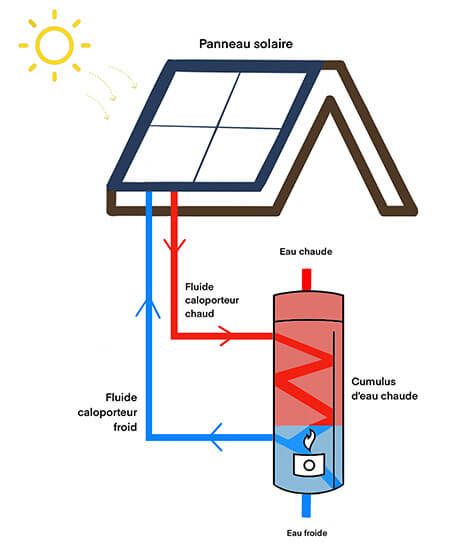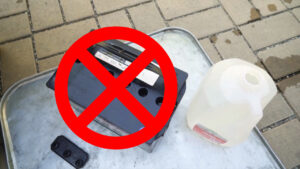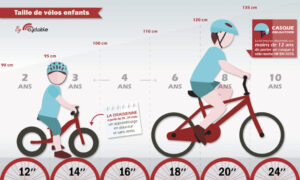Solar thermal panels are an increasingly popular renewable energy source for heating water and the interior of buildings. They offer numerous benefitssuch as reduced heating costs and a positive environmental impact, but also disadvantagesThese include their high initial cost and dependence on weather conditions. In this article, we'll review the advantages and disadvantages of solar thermal panels to help you decide whether it's worth installing them in your home.
Solar thermal panels: benefits and limitations.
Thermal solar panels are a renewable energy source for producing domestic hot water and electricity. They use the sun's energy to heat a heat-transfer fluid, which in turn heats the water in the heating or hot-water production circuit.
The benefits of solar thermal panels are numerous. Firstly, they reduce fossil fuel consumption and hence greenhouse gas emissions. Secondly, they are self-sufficient, requiring no connection to the electricity grid. Last but not least, they have a long service life.
However, the limits of solar thermal panels are also important to consider. Firstly, their performance depends on climatic conditions and panel orientation. What's more, installation costs can be high, and the return on investment can be long. Finally, their use is limited to heating and hot water, which may not be sufficient for a household's energy needs.
Despite their limitations, solar thermal panels remain an attractive solution for individuals and businesses looking to reduce their environmental impact and energy consumption.
LIDL solar panel at €199: the ULTRA COMPLETE TEST!
[arve url="https://www.youtube.com/embed/tyTVaUu3Dts "/]
39 degrees in my pool for free !!!
[arve url="https://www.youtube.com/embed/q_04ciRBnpo "/]
What are the benefits of solar thermal energy?
L'solar thermal energy offers numerous benefits for the environment and for consumers. First of all, it makes it possible to significantly reduce greenhouse gas emissionsIt uses solar energy rather than fossil fuels to produce heat. In this way, it contributes to the fight against climate change.
Secondly, the use of solar thermal energy can reduce energy costs for households and businesses. In fact, once the system is installed, it requires very little maintenance and no major running costs.
What's more, the use of solar thermal energy is one of the most effective ways of reducing energy consumption. sustainable, renewable solutionunlike fossil fuels, which are rapidly depleting. It therefore guarantees long-term energy supplies.
Last but not least, the use of solar thermal energy can have a positive impact on the environment. local job creationThis is particularly true for the installation and maintenance of these systems.
In conclusion, the use of solar thermal energy offers numerous advantages for the environment, the economy and society in general. It's a sustainable, renewable solution that contributes to the transition to a clean energy economy.
What are the benefits and drawbacks of a solar panel?
Visit benefits of a solar panel are numerous. Firstly, it generates green, renewable electricity from solar energy. This energy is inexhaustible and does not pollute the environment. What's more, solar panels are easy to install and have a lifespan of over 25 years. It's also possible to sell surplus electricity to an energy supplier, saving you money on your energy bill.
However, there are a number of drawbacks associated with solar panels. Firstly, their installation cost can be high, although this is offset by the savings on electricity bills in the long term. Solar panels also need sufficient sunlight to operate efficiently, so they may be less suitable in areas with little sunshine or in countries where the climate is often cloudy. Finally, solar panels require regular maintenance to keep them running smoothly, which can be a constraint for some users.
What are the two main disadvantages of solar panels?
The two main disadvantages of solar panels are:
1. High initial cost : Visit solar panels are considerably more expensive than traditional energy sources such as coal, oil and natural gas. Although they reduce long-term costs, most people can't afford them. This limits their popularity and accessibility.
2. Dependence on weather conditions : Solar panels work by capturing sunlightThis means they need to be exposed to daylight to work properly. Cloudy or rainy weather can have a negative impact on electricity production. This makes solar panels less reliable than traditional energy sources.
What's the difference between thermal panels and photovoltaic panels?
Thermal panels and photovoltaic panels are two types of solar panel with different functions. Thermal panels are used to heat water, while photovoltaic panels generate electricity.
Thermal panels are also known as solar thermal panels. They use the sun's energy to heat water, which can then be used to heat homes, swimming pools, etc. Thermal panels are most effective in places where the temperature is higher.
Photovoltaic panels, on the other hand, use sunlight to generate electricity. They are made up of photovoltaic cells that convert light into electricity. This electricity can be used directly to power electrical appliances, or stored in a battery.
In short, thermal panels are used to heat water, while photovoltaic panels are used to generate electricity. Each has its advantages and disadvantages, and their choice will depend on the intended use and environmental conditions.
What are the advantages and disadvantages of thermal solar panels compared with photovoltaic solar panels?
Thermal solar panels are primarily designed to produce domestic hot water or energy for heating. They are therefore particularly well suited to regions where heating is widely used. Their efficiency is also higher than that of photovoltaic panels for this type of use.
However, photovoltaic solar panels have the advantage of being able to generate electricity, which can be used directly or stored in batteries. This makes them ideal for regions where electricity is used more than heating. What's more, they have a longer lifespan and lower maintenance costs.
In terms of installation, both types of solar panel require significant investment, but photovoltaic panels have the advantage of being easier to install and can be mounted on sloping or flat roofs. Thermal solar panels, on the other hand, require special installation to produce hot water.
In short, the choice between thermal and photovoltaic solar panels will depend on the energy needs of each household or business, as well as the region in which they are located.
How do solar thermal panels work and what are their advantages for water heating?
Thermal solar panels are devices that use solar energy to heat water. They consist of a set of black tubes embedded in an insulated glass panel mounted on a metal support. Solar thermal panels operate on a simple principle: water circulates through the black tubes, where it is heated by the sun, and then returns to the home's hot water tank.
The benefits of solar thermal panels for water heating are numerous. Firstly, they significantly reduce energy bills by using a free, renewable source of energy. What's more, they're very environmentally friendly, as they produce no greenhouse gases or pollution. Finally, they are highly durable and require little maintenance, making them a profitable long-term investment for homeowners.
What is the initial cost of solar thermal panels and how long does it take for the investment to pay off?
The initial cost of solar thermal panels varies according to the size of the system and the number of panels required. On average, the cost of a solar thermal system for a family of four is between 5,000 and 10,000 euros. This may sound expensive, but it's important to understand that solar thermal panels are not just a short-term investment.
How long does it take for the investment to pay off? It also depends on various factors, such as geographical location, hot water use, electricity costs and more. Generally speaking, it takes between 7 and 12 years to recoup the initial cost of installing solar thermal panels. However, this can vary considerably depending on the factors mentioned above.
It's also important to note that solar thermal panels have a lifespan of around 25 years, meaning they can provide free hot water for many years after the initial investment has been recouped. Ultimately, installing solar thermal panels can be a wise choice for those looking to save money on their electricity bill in the long term, while taking a more environmentally-friendly approach.
In conclusion, solar thermal panels offer many advantages, especially for environmentally conscious homeowners looking to reduce their energy bills. They are a clean, renewable energy source and can be used to heat water or supply central heating. However, they also have a number of disadvantages, such as their high initial cost and dependence on weather conditions. So it's important to weigh up the pros and cons before deciding whether solar thermal panels are the right solution for your home.
In the end, Solar thermal panels can be a profitable long-term investment, as well as an environmentally-friendly option. If you decide to install them, it's important to choose high-quality panels and have them professionally installed to ensure maximum efficiency. As solar technologies continue to improve, it's likely that solar thermal panels will become even more efficient and affordable in the years to come.








